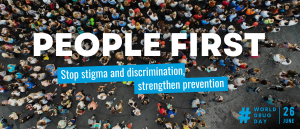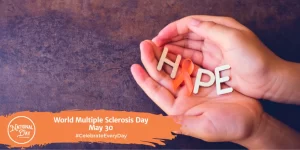 World Parkinson’s Disease Day marks the birthday of Dr. J Parkinson. On this day there are efforts made to increase the public awareness of this terrible disease, as well as all the good works put forth by the world’s organizations dedicated to eradicating this disease.
World Parkinson’s Disease Day marks the birthday of Dr. J Parkinson. On this day there are efforts made to increase the public awareness of this terrible disease, as well as all the good works put forth by the world’s organizations dedicated to eradicating this disease.
Dr. Parkinson first described the disease in “An Essay on the Shaking Palsy”, he described a pattern of lessened muscular power, involuntary tremulous motion, even if these are supported. There is at tendency to bend the body forwards, and to involuntarily switch from a walking to a running pace, while the sense and intellect deteriorate.
One of the prominent symbols of Parkinson’s disease is the red tulip, and this was established at the 9th World Parkinson’s disease Day at the Luxembourg Conference. The story of the Red Tulip can be tied back to J.W.S. Van der Wereld, a Dutch Horticulturalist who was suffering from Parkinson’s disease. He had successfully generated a Red and White Tulip, and named it in honor of the man who named his medical condition. On the tail of this, the Tulip received the Award of Merit, granted by the Royal Horticultural Society in London, and then was granted the Royal General Bulb Growers, Trial Garden Award.
Many people do not understand what Parkinson’s is, or are unaware of how to identify it. In the interest of promoting awareness of this disease, a simplified description follows. It is a disorder that results in the degeneration of the central nervous system, and directly impacts those that nerves that handle motor functions for the body as a whole. As the disease advances, it becomes apparent from the slowness of their body, and the increasing stiffness of their limbs that there is a developing problem. Their limbs will begin to shake uncontrollably as it gets further on, and eventually an entire scope of additional symptoms will develop as more and more motor functions are impacted. Sufferers are often tired, and memory problems become more apparent as time goes on.
Source: Text (summary): DAYSoftheYEAR Image: HydroWorx


 World Multiple Sclerosis Day on May 30th creates an opportunity to boost awareness and connect those with MS to resources and improve support systems.
World Multiple Sclerosis Day on May 30th creates an opportunity to boost awareness and connect those with MS to resources and improve support systems. World Multiple Sclerosis Day, falling on May 30, invites dialogue on the disease. Multiple Sclerosis (MS) is a chronic progressive disease where the insulating covers of the nervous system are damaged. MS is also known as encephalomyelitis disseminata, and its symptoms include muscle weakness, double vision, and mental/physical problems. Due to the lack of research studies on the disease, the exact causes behind it are generally unknown. Many scientists believe that there might be a connection between the onset of the disease and genes and/or nerve-cell dysfunction. Furthermore, there is no permanent cure as of yet. The symptoms can be relieved using the right set of treatments and medication.
World Multiple Sclerosis Day, falling on May 30, invites dialogue on the disease. Multiple Sclerosis (MS) is a chronic progressive disease where the insulating covers of the nervous system are damaged. MS is also known as encephalomyelitis disseminata, and its symptoms include muscle weakness, double vision, and mental/physical problems. Due to the lack of research studies on the disease, the exact causes behind it are generally unknown. Many scientists believe that there might be a connection between the onset of the disease and genes and/or nerve-cell dysfunction. Furthermore, there is no permanent cure as of yet. The symptoms can be relieved using the right set of treatments and medication. World Parkinson’s Disease Day marks the birthday of Dr. J Parkinson. On this day there are efforts made to increase the public awareness of this terrible disease, as well as all the good works put forth by the world’s organizations dedicated to eradicating this disease.
World Parkinson’s Disease Day marks the birthday of Dr. J Parkinson. On this day there are efforts made to increase the public awareness of this terrible disease, as well as all the good works put forth by the world’s organizations dedicated to eradicating this disease. 
 What Rare Disease Day is about
What Rare Disease Day is about